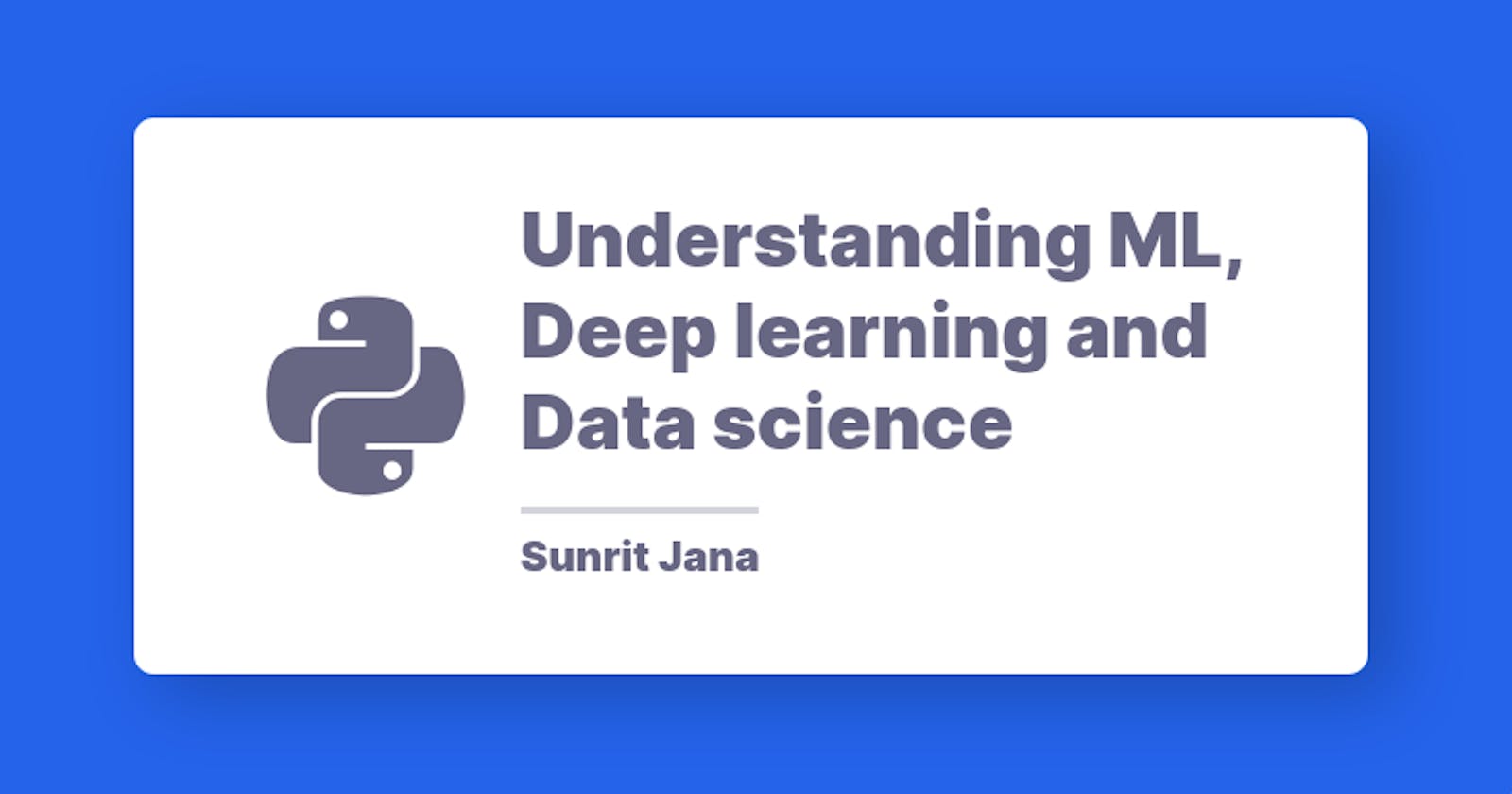What is data science?
Data science is a computing field in computer science, where various scientific methods (like scipy, numpy, pandas, etc libraries contain in python) and algorithms are used to get more knowledge, and gather various insights, and weak-strong points, analyze them, and use them to improve.
As wikipedia says: Data science is a "concept to unify statistics, data analysis and their related methods" in order to "understand and analyze actual phenomena" with data.
Hence it's an useful tool to get more knowledge and improve the weak points which aren't performing well.
Now, what is ML?
ML is an implementation of various computer algorithms, which enable it to find various patterns, and points in data, analyze them, and try to give predictions by utilizing the pattern it found.
So basically in short, it uses the algorithm we used to train itself, then learns and finally gives predictions for unseen / unknown data, which it is unfamiliar with.
- How does it work?
We feed in DATA as the input + Output (the labels), run it on machine during training and the machine creates its own program(logic) by finding the common-ness and patterns between the data and data points, and evaluating them, which can be evaluated while testing.
Now, what does Deep learning mean?
Deep learning in a subset of ML family, where this uses heavy computations and really good predictions than ML on training. It uses artificial neural networks to train itself, which is a simulation of the human brain.
The deep learning architecture implements the neural networks in a lot of ways, represented in the form of various algorithms for different learning strategies. Like:
- CNN for convolutional networks
In deep learning, a CNN (convolutional neural network) is a class of deep neural networks used for visual class imagery prediction. They are also known as shift invariant or space invariant artificial neural networks, based on their architecture and translation invariance characteristics.
- RNNs for recurrent learning
Recurrent neural networks (RNN) are a class of neural networks that are helpful in modeling sequence data. Derived from feedforward networks, RNNs exhibit similar behavior to how human brains function. Simply put: recurrent neural networks produce predictive results in sequential data that other algorithms can't
- GAN for inheritance based learning
A generative adversarial network is a class of machine learning frameworks designed by Ian Goodfellow and his colleagues in 2014. Two neural networks contest with each other in a game. Given a training set, this technique learns to generate new data with the same statistics as the training set.
- Deep belief network for Graphical learning.
Deep Belief Networks are a graphical representation which are essentially generative in nature i.e. it produces all possible values which can be generated for the case at hand. It is an amalgamation of probability and statistics with machine learning and neural networks. Deep Belief Networks consist of multiple layers with values, wherein there is a relation between the layers but not the values. The main aim is to help the system classify the data into different categories.
We have now reached the end of the blog :)
I hope you have learnt something new, and understood it. Be sure to leave a comment, if you want to know more about something or have any doubt, and I'll be sure to help you out!
Thanks for reading, have an awesome day ❤️ !

